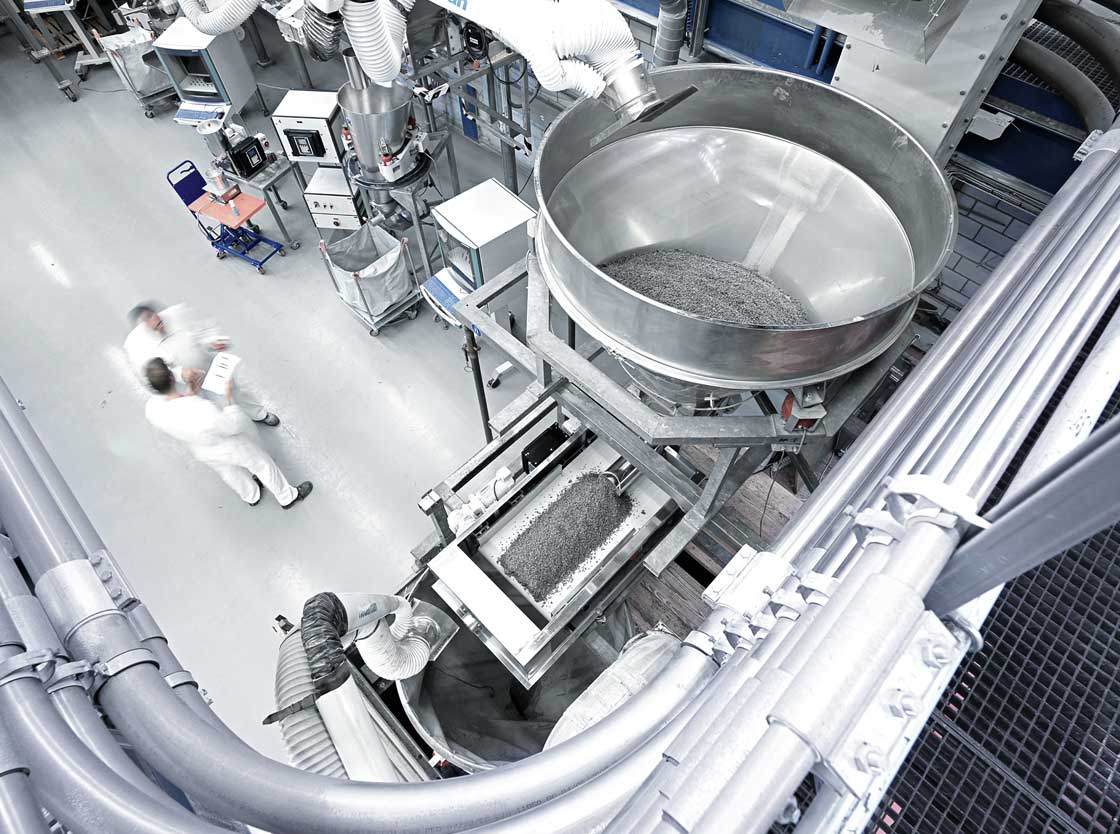Question: How has having the extrusion experts on-site been a benefit for tests being done in the feeding lab?
Lewis Cesarano: Having extrusion experts on-site means there is always someone available to talk with customers about their extrusion applications and the ways Coperion can help them. Food extrusion involves a knowledge not only of the mechanical extrusion process but also the important food chemistry reactions which occur within the extruder. By optimizing the feeding and material handling of the ingredients prior to the extruder, and also the overall food extrusion steps, together we can consider the optimal requirements for the entire development process. We can also take customers on a quick tour through the extrusion lab and show them our additional capabilities. When customers are in for extrusion testing, we extend the same courtesy, whether it be a tour through the feeder lab, discussing feeder testing, or troubleshooting a feeder during the extrusion trial.
Question: Do we have customers taking advantage of having both test centers under one roof? If so, what is the feedback from those customers?
Cameron Kheradi: Many of our customers will leverage both the extruder lab and feeder lab during their process development activities. This can be done actively, by scheduling a stand-alone feeder evaluation as a follow-up or in anticipation of an extrusion trial. Alternatively, an evaluation of bulk materials and feeder selection can also be done in parallel with extrusion testing due to the on-site subject matter experts. Outside of a formal feeder trial, it is not uncommon for Lewis to be present for extrusion tests to observe characteristics and flow behaviors of hard-to-handle materials and make recommendations based on those observations. We value our customer’s time and willingness to conduct trials; it is our goal to make the time spent in the lab as productive and informative as possible. Rather than waiting until after the extruder trial to make feeder recommendations or waiting on the phone with 3rd party vendors for support, we can address issues expediently and effectively by simply taking a two-minute walk down the hall and knocking on Lewis’s door.
Question: Even though every material test has its own set of characteristics have you seen anything recently that stands out in interest?
Lewis Cesarano: It is always interesting going from testing 2,000 kg/h on a K-ML-T80 gravimetric twin screw feeder one week, and then testing less than 100 g/h on a 12 mm twin screw microfeeder the next week. The wide variety of food material characteristics certainly keeps these tests interesting as well!
Cameron Kheradi: All extrusion processes have a strong reliance on feeder capability. However, there are some current processes where feed stability and optimization are particularly crucial. This is especially true with plant protein applications. To date, a variety of plant proteins have been tested including soy and pea proteins, mung beans, funghi, etc. Most of these materials are difficult to feed, and inconsistent feed and feeder refill can also cause inconsistencies in final extrusion product output. In the case of both TVP and HMMA, it is important to optimize both the feeding as well as extrusion technologies in order to achieve the best product in both texture and moisture content. Having experts available for all these process technologies ensures an optimal end product! Extruders and feeders do not work in isolation, they rely on each other to create a quality product as efficiently as possible. The same can be said about the extrusion and feeding test centers. Together, through continuous cooperation, we are maximizing the value we provide our customers and the markets they serve.
Cameron and Lewis, thank you for the interview!


